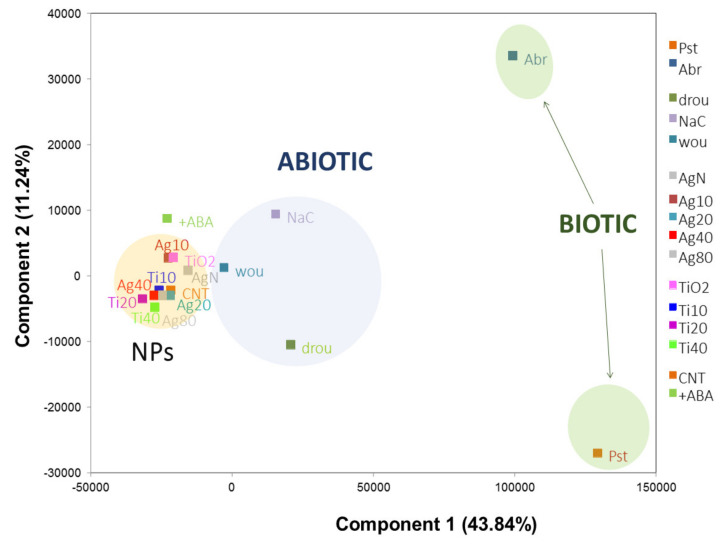Figure 2.
Principal Component Analysis of Arabidopsis microarray data performed by García et al. [34]. The first and second components of the analysis, which captured respectively 43.84% and 11.24% of the variation in data, were plotted to visualize similarities among samples. Plants were exposed to biotic stress by inoculation with the necrotrophic fungus Alternaria brassicicola (Abr) or the hemibiotrophic bacterium Pseudomonas syringae (Pst), and to abiotic stress by hypersaline conditions (NaC), drought (drou), or wounding (wou). For NP exposure, plants were grown in MS medium containing NPs made of 3 different materials -Ag, TiO2, or carbonaceous nanotubes- and at different sizes in the nanoscale. Ag20, Ag40, Ag80, and AgN represent the addition of Ag NPs of 10-, 20-, 40- and 80-nm diameter, or AgNO3 bulk material, respectively. Ti10, Ti20, Ti40, and TiO2 indicate the addition of TiO2 NPs of 10-, 20-, 40-nm diameter, or TiO2 bulk material. CNT indicates the addition of carbon nanotubes. Since Abscisic Acid (ABA) hormone is a key regulator of abiotic stress responses, exogenous addition of ABA (+ABA) was assayed to test for remediating effects on CTN-exposed plants. Transcriptomic data are available at www.ebi.ac.uk/arrayexpress under the accession number E-MTAB-3331.

